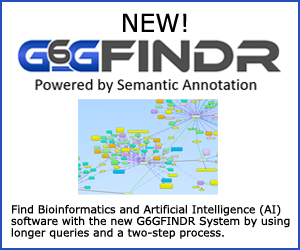Innate Immune Database (IIDB)
Category Cross-Omics>Knowledge Bases/Databases/Tools
Abstract The Innate Immune Database (IIDB) is a repository of genomic annotations and experimental data for over 2,000 genes associated with immune response behavior in the mouse genome.
A specific focus of IIDB is on Toll-like Receptor (TLR) genes, which are key components of innate immunity. As part of the manufacturer's research a customized Affymetrix gene chip was developed to generate and explore ChIP-chip binding data specific to TLR mouse genes.
The selection of genes on the customized gene chip was based on the mouse assembly NCBI Build 33 and as such, the annotations in IIDB are by necessity mapped to this assembly.
The annotations contained within IIDB are derived using data from over 100 microarray experiments, the National Center for Biotechnology Information (NCBI) and ENSEMBL annotation databases, computationally predicted transcription factor binding sites (TFBS), co- expression clusters, predicted cis-regulatory modules, evolutionary conserved regulatory sequences, and sample ChIP-chip data.
For each gene, the manufacturer has analyzed the sequence from at least 20 kb upstream of the transcription start site to at least 10kb downstream of the transcription end site, including all exons and introns.
Annotations for DNase (A deoxyribonuclease) hypersensitive sites, as well as exon/intron boundaries, CpG islands (CpG islands are 'genomic regions' that contain a high frequency of CG nucleotides), repeats, Affymetrix GeneChip expression array probes are included in the database to facilitate analysis for users with ChIP-chip data (ChIP- chip is a technique that combines chromatin immunoprecipitation ("ChIP") with microarray technology ("chip").
IIDB offers users multiple, flexible ways to interrogate the database. Search results can be generated by analyzing single genes for all available sources of annotations.
Groups of co-expressed genes can also be analyzed to determine, for example, whether these genes share common transcription factor binding sites.
Search results are automatically annotated on the genomic DNA sequence and can be viewed using the Argo genome browser or saved to the user's own computer.
Background and additional info about IIDB --
Transcriptional regulation underlies macrophage responses to TLR signaling. Differential transcriptional activity in response to TLR signaling tailors macrophage responses to different pathogens.
In spite of dramatic recent achievements, the cost and difficulty of comprehensive experimental identification of transcription factor binding sites (e.g. using ChIP-chip technology) continues to be high, both financially and also in terms of manpower and time needed.
It is therefore highly advantageous to use computational methods to make an initial prediction of key transcription factors regulating macrophage gene expression changes in responses to pathogens.
IIDB contains annotations for over '2,000 TLR-responsive mouse genes' annotated using data from over 100 microarray experiments, the ENSEMBL database, NCBI database, computationally predicted TFBS, predicted cis- regulatory modules, evolutionary conserved regulatory sequences, DNase hypersensitive sites, co-expression clusters, and sample ChIP-chip data.
For each mouse gene, the manufacturer has analyzed the sequence from at least 20 kb upstream of the transcription start site to at least 10kb downstream of the transcription end site, including all exons and introns.
Annotations for DNase hypersensitive sites, as well as exon/intron boundaries, CpG islands, repeats, Affymetrix GeneChip expression array probes (Mouse 320 2.0) are included in the database to facilitate analysis for users with ChIP-chip data.
Users can interactively interrogate IIDB using a web interface. Search results are automatically annotated on the genomic DNA sequence and imported via .gff2 and .gff3 files into the Argo genome browser (see G6G Abstract Number 20377).
The customized Affymetrix gene chip was developed upon sequence slices based around specific genes. Upon investigating these sequences it was found that the gene names and annotations defined by NCBI and ENSEMBL did Not agree in all cases.
Hence for each source of gene annotation, the manufacturer includes the genes that they respectively report within the specific gene sequences laid on the gene chip. IIDB users can choose which gene annotations they wish to use.
The computational scans for putative transcription factor binding sites were undertaken using different levels of stringency, to reduce the reporting of false positive predictions.
Each binding site matrix used in IIDB was assessed to determine the expectation that it would make a prediction with respect to a random background model.
Three thresholds were used: 0.1 indicates the expectation of recording a prediction once in 1000 bases; 0.05 once in 2000 and0.01 once in 10,000 bases (the most stringent).
Construction and Content --
IIDB uses the MYSQL relational database system to store, retrieve and manage the data. The web interface between the user and IIDB is coded in PERL/CGI.
Documentation --
IIDB offers an on-line 'How to Use IIDB' and a PDF based 'Quick Tutorial Guide'.
System Requirements
Web-based.
Manufacturer
- Developed by InnateImmunity-SystemsBiology.org
- Aderem Group, and Shmulevich Group at the
- Institute for Systems Biology
- 1441 North 34th Street
- Seattle, WA 98103-8904
- Phone: (206) 732-1200
- Fax: (206) 732-1299
Manufacturer Web Site IIDB
Price Contact manufacturer.
G6G Abstract Number 20376
G6G Manufacturer Number 104018







